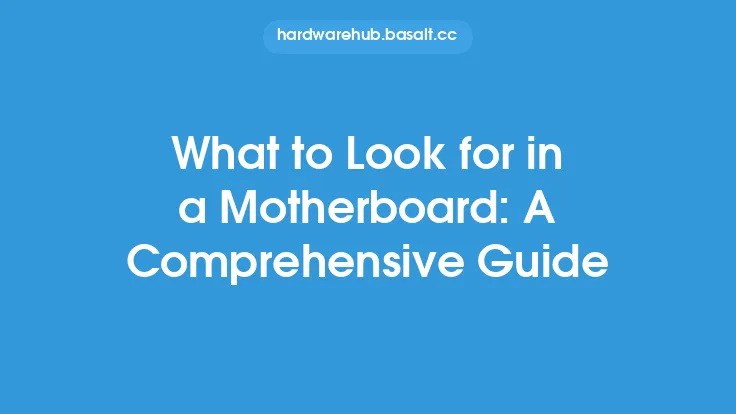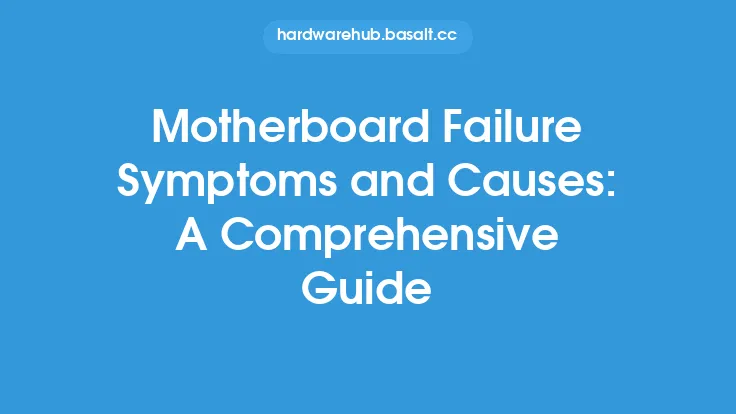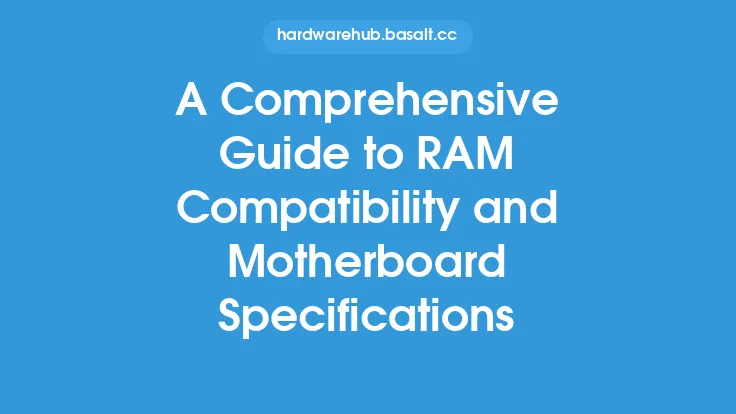When it comes to building or upgrading a computer, one of the most critical components to consider is the motherboard. The motherboard serves as the main circuit board of the computer, connecting all the hardware components together and facilitating communication between them. One popular form factor for motherboards is the Micro ATX, which offers a balance between size, features, and affordability. In this article, we will delve into the world of Micro ATX motherboards, exploring their history, specifications, advantages, and applications.
Introduction to Micro ATX Motherboards
Micro ATX motherboards were introduced in 1996 by Intel as a smaller alternative to the standard ATX form factor. The "Micro" prefix refers to the smaller size of the motherboard, which measures 9.6 inches (24.4 cm) square, compared to the 12 inches (30.5 cm) square of a standard ATX motherboard. This reduction in size was achieved by removing some of the less commonly used features and connectors, making the Micro ATX form factor more compact and efficient. Despite its smaller size, the Micro ATX motherboard still offers a wide range of features and expansion options, making it a popular choice among computer enthusiasts and builders.
Key Features and Specifications
Micro ATX motherboards typically have the following key features and specifications:
- Four to six PCI Express (PCIe) slots, including at least one PCIe x16 slot for graphics cards
- Two to four DIMM slots for RAM, supporting up to 64 GB or more of memory
- Four to six SATA ports for storage devices
- One to two USB 3.2 Gen 2 ports and multiple USB 3.2 Gen 1 ports
- One to two Ethernet ports, with support for Gigabit Ethernet or faster
- Audio and video output options, including HDMI, DisplayPort, and DVI
- Support for multiple CPU sockets, including Intel LGA and AMD AM4
Micro ATX motherboards also often feature advanced technologies such as Wi-Fi, Bluetooth, and high-definition audio. Some high-end models may include additional features like USB 3.2 Gen 2x2, Thunderbolt 3, or high-speed storage options like M.2 NVMe SSDs.
Advantages of Micro ATX Motherboards
Micro ATX motherboards offer several advantages over other form factors, including:
- Smaller size, making them ideal for compact computer cases and home theater PCs
- Lower cost, as they require fewer materials and manufacturing processes
- Improved airflow and cooling, due to the reduced size and component density
- Greater flexibility, with support for a wide range of CPUs, GPUs, and storage devices
- Easy upgradability, with multiple expansion slots and connectors
- Compatibility with a wide range of operating systems, including Windows, Linux, and macOS
Applications and Use Cases
Micro ATX motherboards are suitable for a variety of applications and use cases, including:
- Home and office desktop computers, where a compact size and low cost are important
- Gaming PCs, where a powerful CPU and GPU are required
- Home theater PCs, where a small size and low noise level are essential
- Media centers, where multiple storage devices and audio/video output options are needed
- Small form factor PCs, where a compact size and low power consumption are critical
- Embedded systems, where a reliable and compact motherboard is required
Choosing the Right Micro ATX Motherboard
When selecting a Micro ATX motherboard, there are several factors to consider, including:
- CPU socket and chipset compatibility
- Number and type of expansion slots and connectors
- Storage and audio/video output options
- Power consumption and cooling requirements
- Operating system and software compatibility
- Budget and cost constraints
It's essential to research and compare different Micro ATX motherboards to find the one that best meets your specific needs and requirements.
Conclusion
In conclusion, Micro ATX motherboards offer a unique combination of size, features, and affordability, making them a popular choice among computer enthusiasts and builders. With their compact size, advanced technologies, and wide range of expansion options, Micro ATX motherboards are suitable for a variety of applications and use cases. By understanding the key features, specifications, and advantages of Micro ATX motherboards, you can make an informed decision when selecting the right motherboard for your next computer build or upgrade. Whether you're building a gaming PC, home theater PC, or small form factor PC, a Micro ATX motherboard is definitely worth considering.





